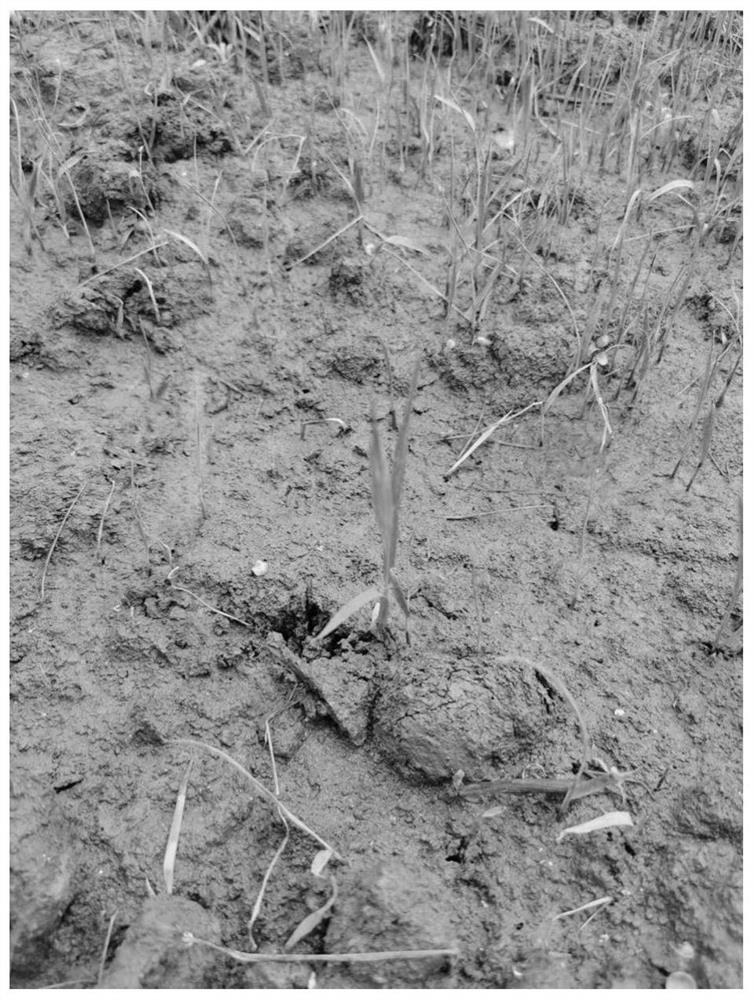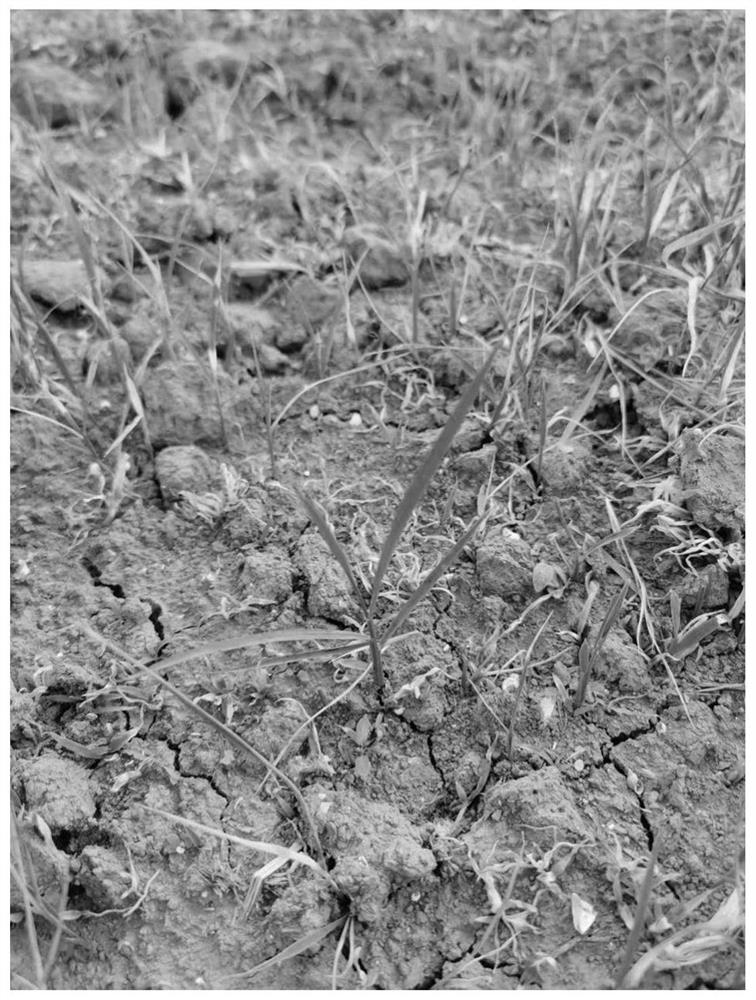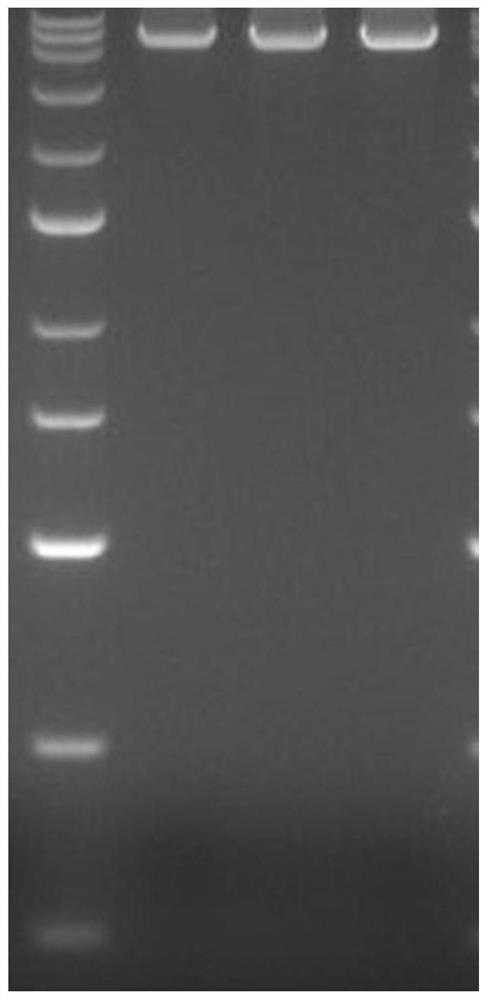Application of rice ACCase mutant gene and protein thereof in plant herbicide resistance
A mutant, herbicide technology, applied in the field of plant genetic engineering and plant herbicide resistance breeding, to achieve the effect of significant resistance function
- Summary
- Abstract
- Description
- Claims
- Application Information
AI Technical Summary
Problems solved by technology
Method used
Image
Examples
Embodiment 1
[0062] Embodiment 1 Rice M3 mutant is resistant to acetyl-CoA carboxylase herbicides (quinalofop-p-ethyl)
[0063] Use 0.5-1.0% (w / w) methanesulfonic acid in 150 kg of japonica conventional rice seed He Guang Si Miao (a gift from the Jiangsu Provincial Agricultural Germplasm Resources Protection and Utilization Platform, this is M0, soaked in water for 2 hours) 6 times Soak in ethyl ester (EMS) at room temperature for 6-9 hours, shake the seeds every 1 hour during this period; discard the EMS solution, soak the seeds 5 times in tap water, 5 minutes each time, then rinse the seeds with tap water overnight, and sow in the field the next day , and carry out conventional fertilizer and water management (this is M1). After the plants are mature, the seeds are mixed, dried, and stored for the winter. Sow in the field the following year. When the rice (this is M2) seedlings grow to the 3-4 leaf stage, spray 1mL quizalofop-p-ethyl / L water, and after 30 days, the normal green plants ...
Embodiment 2
[0066] Example 2: Obtaining the full-length gene of wild-type Accase in rice Zhennuo 19
[0067] Select the leaves of He Guang Si Miao wild-type plants, extract genomic DNA, design primers according to the Nipponbare ACCase gene (NCBI: XM_015783727) in NCBI to amplify, and use KOD DNApolymerase polymerase (purchased from Toyobo Company) to amplify the ACCase gene, the reaction The system is as follows:
[0068]
[0069] The PCR amplification reaction program adopts a two-step method, annealing and extension are combined together, and 68 degrees are used.
[0070] The program is as follows: pre-denaturation: 94°C for 3min; 35 cycles: denaturation at 94°C for 10sec; extension at 68°C for 10min; insulation: 72°C for 10min.
[0071] Take 2 μl of PCR products and detect by 1% agarose gel electrophoresis, after finding fragments of expected size ( image 3 ), the remaining PCR products were cleaned and recovered by a PCR cleaning kit (purchased from Axygen), cloned into the pMD...
Embodiment 3
[0076] Example 3: Mutation site analysis of rice mutant HGJK-3 resistant to acetyl-CoA carboxylase herbicides
[0077] The leaves of the obtained herbicide-resistant mutant rice plant HGJK-3 were selected and genomic DNA was extracted, and the genomic DNA of the wild-type rice He Guangsi seedlings and the rice mutant plant HGJK-3 were respectively used as templates for PCR amplification. Increase condition is the same as embodiment 2, amplification result is as image 3. At the same time, it was sent to Nanjing Yidao Biotechnology Co., Ltd. for sequencing. Comparing the sequencing results with the wild-type ACCase gene of Heguang Simiao, it was found that there was a mutation at one site on the ACCase gene, and the 6029th base was mutated from G to T, resulting in a change in the corresponding encoded amino acid sequence. The 2010th position is changed from tryptophan to leucine, that is, the nucleotide sequence of the ACCase gene of the herbicide-resistant mutant is shown i...
PUM
 Login to View More
Login to View More Abstract
Description
Claims
Application Information
 Login to View More
Login to View More - R&D
- Intellectual Property
- Life Sciences
- Materials
- Tech Scout
- Unparalleled Data Quality
- Higher Quality Content
- 60% Fewer Hallucinations
Browse by: Latest US Patents, China's latest patents, Technical Efficacy Thesaurus, Application Domain, Technology Topic, Popular Technical Reports.
© 2025 PatSnap. All rights reserved.Legal|Privacy policy|Modern Slavery Act Transparency Statement|Sitemap|About US| Contact US: help@patsnap.com



